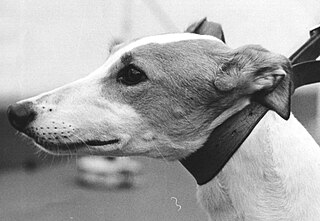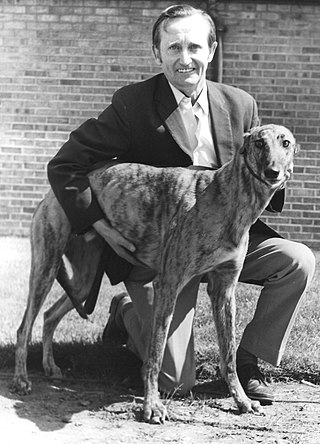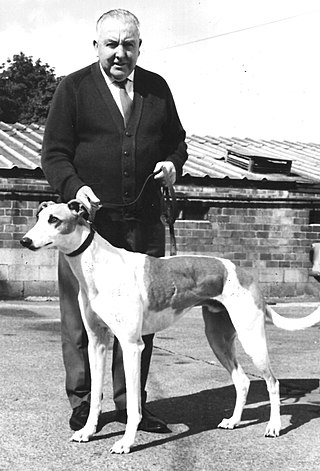Related Research Articles
The 1937 UK & Ireland Greyhound Racing Year was the 12th year of greyhound racing in the United Kingdom and Ireland.
The 1938 UK & Ireland Greyhound Racing Year was the 13th year of greyhound racing in the United Kingdom and Ireland.
The 1950 UK & Ireland Greyhound Racing Year was the 25th year of greyhound racing in the United Kingdom and Ireland.
The 1956 UK & Ireland Greyhound Racing Year was the 30th year of greyhound racing in the United Kingdom and Ireland.
The 1958 UK & Ireland Greyhound Racing Year was the 32nd year of greyhound racing in the United Kingdom and Ireland.

The 1959 UK & Ireland Greyhound Racing Year was the 33rd year of greyhound racing in the United Kingdom and Ireland.

The 1960 UK & Ireland Greyhound Racing Year was the 34th year of greyhound racing in the United Kingdom and Ireland.
The 1961 UK & Ireland Greyhound Racing Year was the 35th year of greyhound racing in the United Kingdom and Ireland.
The 1964 UK & Ireland Greyhound Racing Year was the 38th year of greyhound racing in the United Kingdom and Ireland.
The 1965 UK & Ireland Greyhound Racing Year was the 39th year of greyhound racing in the United Kingdom and Ireland.
The 1967 UK & Ireland Greyhound Racing Year was the 41st year of greyhound racing in the United Kingdom and Ireland.

The 1968 UK & Ireland Greyhound Racing Year was the 42nd year of greyhound racing in the United Kingdom and Ireland.
The 1969 UK & Ireland Greyhound Racing Year was the 43rd year of greyhound racing in the United Kingdom and Ireland.

The 1971 UK & Ireland Greyhound Racing Year was the 45th year of greyhound racing in the United Kingdom and Ireland.

The 1972 UK & Ireland Greyhound Racing Year was the 46th year of greyhound racing in the United Kingdom and Ireland.

The 1973 UK & Ireland Greyhound Racing Year was the 47th year of greyhound racing in the United Kingdom and Ireland.
The 1975 UK & Ireland Greyhound Racing Year was the 49th year of greyhound racing in the United Kingdom and Ireland.
The 1980 UK & Ireland Greyhound Racing Year was the 54th year of greyhound racing in the United Kingdom and Ireland.
Jim Manoel Syder Jr. (1911-1972) was an English greyhound trainer. He achieved the highest training accolade when winning the English Greyhound Derby.
Pigalle Wonder was a racing greyhound during the late 1950s and early 1960s. He was the United Kingdom Greyhound of the Year and won the sports top accolade by winning the 1959 English Greyhound Derby.
References
- ↑ Fry, Paul (1995). The Official NGRC Greyhound Racing Yearbook. Ringpress Books. ISBN 186054-010-4.
- ↑ Dack, Barrie (1990). Greyhound Derby, the first 60 years pages 101/102/103/104. Ringpress Books. ISBN 0-948955-36-8.
- ↑ "1957". Greyhound Data.
- ↑ Comyn, John. 50 Years of Greyhound Racing in Ireland. Aherlow Publishers Ltd.
- ↑ Fortune, Michael. Irish Greyhound Derby 1932-1981. Victory Irish Promotions Ltd.
- ↑ Hobbs, Jonathan (2007). Greyhound Annual 2008, pages 153-154. Raceform. ISBN 978-1-905153-53-4.
- ↑ Genders, Roy (1975). The Greyhound and Racing Greyhound, page 320. Page Brothers (Norwich). ISBN 0-85020-0474.
- ↑ Barnes, Julia (1988). Daily Mirror Greyhound Fact File. Ringpress Books. ISBN 0-948955-15-5.
- ↑ ""G.R.A Trust." Times, 30 July 1958, p. 14". The Times. Times Digital Archives. 30 July 1958. p. 14.
- ↑ ""Stores Firm To Buy Harringay Arena." Times, 25 July 1958, p. 8". The Times. Times Digital Archives. 25 July 1958. p. 8.
- ↑ "Monthly Greyhound Star (Remember When 1957) May edition". Greyhound Star. 2012.
- ↑ Barnes, Julia (1991). Daily Mirror Greyhound Fact File, Vol Two. Ringpress Books. ISBN 0-948955-61-9.
- 1 2 3 4 Genders, Roy (1981). The Encyclopedia of Greyhound Racing. Pelham Books Ltd. ISBN 07207-1106-1.
- 1 2 3 4 Genders, Roy (1990). NGRC book of Greyhound Racing. Pelham Books Ltd. ISBN 0-7207-1804-X.
- ↑ Barnes/Sellers, Julia/John (1992). Ladbrokes Greyhound Fact File. Ringpress Books. ISBN 0-948955-22-8.
- ↑ Genders, Roy (1975). The Greyhound and Racing Greyhound. Page Brothers (Norwich). ISBN 0-85020-0474.
- ↑ Fortune, Michael. The 75 Years History of the Irish Greyhound Derby. Irish Greyhound Review. ISSN 0332-3536.
- ↑ "Hall of Fame". Greyhound Board of Great Britain.